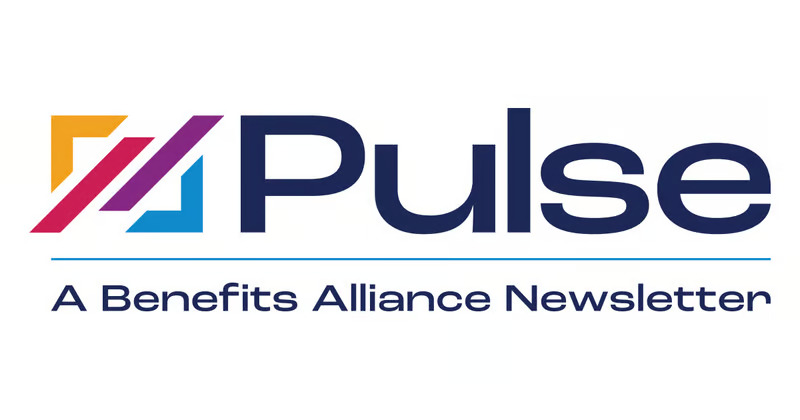What do employees want in today’s rapidly changing work landscape? As business leaders, insurance advisors, and HR professionals strive to create a thriving workplace culture that attracts top talent and fosters employee satisfaction, understanding the needs of a diverse workforce is crucial. In this week’s Pulse, we will explore various factors that contribute to job satisfaction and security for future workforce generations.
We’ll look at how radical flexibility in the workplace through remote and hybrid working models can help employees achieve better work-life balance. We’ll also delve into building trust and empowerment by rewarding outcomes over outputs while strengthening colleague relationships.
In addition to these aspects of what employees want, leveraging technology for collaboration across teams becomes increasingly important in today’s world where remote work prevails. We will also touch on aligning candidate expectations with job responsibilities through realistic job previews, as well as continuously assessing employee value propositions that cater to diversity, equity, and inclusion within organizations.
Radical Flexibility in the Workplace
A recent study by Citrix found that 88% of knowledge workers want complete flexibility in their hours and location, with 76% believing future employees will prioritize lifestyle over proximity to work.
Employers must adapt policies to accommodate remote or hybrid working arrangements to attract and retain top talent.
Remote and Hybrid Working Models
The COVID-19 pandemic accelerated the shift towards remote and hybrid working models.
Employers are now reevaluating traditional office settings as more professionals seek opportunities outside conventional workplaces.
Flexible work options can improve employee satisfaction and increase productivity levels.
Adapting Policies for Employee Preferences
- Create clear guidelines: Establish well-defined policies on remote work expectations, communication protocols, and performance metrics.
- Promote a healthy work-life balance: Encourage employees to set boundaries between personal life and professional responsibilities while working remotely.
- Incorporate technology tools: Utilize collaboration platforms like Slack, video conferencing software such as Zoom, or project management applications like Asana.
Organizations must embrace radical flexibility within the workplace to remain competitive in attracting top talent.
Incorporating these tactics can help foster a more welcoming and accommodating ambiance for personnel, leading to improved morale and effectiveness.
Building Trust and Empowerment
In today’s job market, employees seek organizations that prioritize trust and empowerment, according to a study by Google.
Rewarding outcomes over outputs boosts employee satisfaction and encourages innovation and problem-solving skills.
Strengthening Colleague Relationships
- Create opportunities for collaboration: Encourage teamwork through cross-functional projects or brainstorming sessions.
- Promote open communication: Implement transparent communication channels like town hall meetings or anonymous feedback platforms.
- Celebrate successes together: Recognize achievements both big and small by hosting company-wide celebrations or acknowledging individual accomplishments during team meetings.
By taking these steps, trust is fostered and employees are empowered to maximize their contributions which leads to higher productivity and decreased attrition.
Leveraging Technology for Collaboration
As the modern workplace evolves, it’s crucial for organizations to adopt technologies that streamline processes across teams, regardless of location, to foster collaboration and stay competitive.
Streamlining Processes with Technology
Tools like Microsoft Teams, Slack, and Asana improve communication and project management among remote team members with real-time messaging, file sharing, and task tracking.
Fostering Collaboration Across Remote Teams
- Video conferencing: Use Zoom or Google Meet to conduct virtual meetings and maintain face-to-face interactions.
- Digital whiteboards: Implement Miro or MURAL to facilitate brainstorming sessions, idea generation, and collaborative problem-solving.
- File sharing: Ensure easy accessibility of documents with cloud-based storage services like Dropbox or Google Drive.
- Time management: Employ time tracking and scheduling tools such as Toggl or Calendly to help remote team members stay organized and manage their workload effectively.
By utilizing these technologies, organizations can foster collaboration among their employees and give themselves an edge in the highly competitive business environment.
Aligning Candidate Expectations and Job Responsibilities
Recruiters must understand candidates’ motivations and interests to succeed in today’s competitive job market.
Realistic job previews (RJPs) can help align expectations with actual responsibilities for long-term success.
- Sharing testimonials from current employees can provide insight into similar roles.
- Offering workplace tours or virtual tours can give candidates a better understanding of the work environment.
- Incorporating day-to-day tasks into interviews or assessments can provide hands-on experience.
Open communication during recruitment processes is key to ensuring candidate-job alignment.
- List all required skills clearly in job postings.
- Create detailed candidate profiles outlining key attributes for success within your organization’s culture.
Aligning candidate expectations with job responsibilities can improve employee satisfaction and retention rates, leading to a more cohesive and engaged workforce.
Assessing Employee Value Proposition Continuously
Organizations must continuously assess their employee value proposition, well-being promise, and candidate experience in light of evolving societal norms such as heightened awareness around racial equity and inclusion in the workplace.
Studying high performers helps refine offerings to meet changing demands.
Evolving employee value propositions
Stay competitive by offering attractive compensation packages, flexible work arrangements, and opportunities for growth and development.
Regularly review your company’s value proposition against industry benchmarks and employee feedback.
Addressing diversity, equity, and inclusion
- Diversity: A diverse workforce brings a variety of perspectives that can lead to more innovative solutions.
- Equity: Ensure equal access to resources like training programs or promotions to create a level playing field for all employees.
- Inclusion: Foster an environment where every team member feels they belong by encouraging open communication channels.
Incorporating these principles into your overall strategy will improve morale and contribute towards building a stronger brand reputation both internally and externally.
Continually assess and evolve your employee value proposition to create a workplace that attracts top talent and retains high performers.
Key Takeaway: In 2023, employees will prioritize hybrid work models, mental well-being support, reskilling/upskilling programs, diversity-focused recruitment strategies, streamlined processes using technology, and realistic job previews. (Deloitte)
